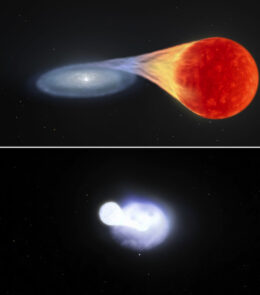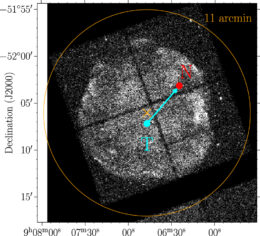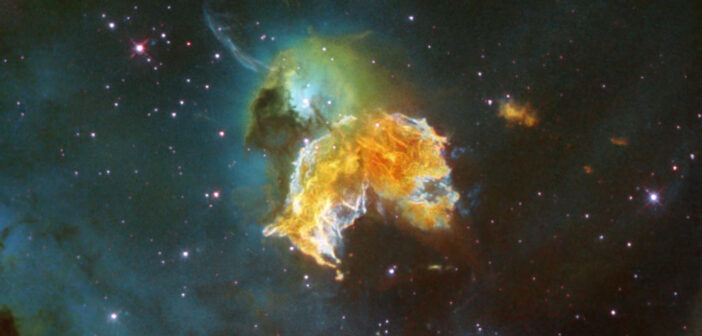Researchers searched the remains of an exploded star for signs of its one-time companion. Though they found a suitable candidate, the star is in some ways an unlikely participant in a Type Ia supernova explosion.
A Companion to an Exploding Star

Illustrations of the two main Type Ia supernova pathways: the single-degenerate model (top) and the double-degenerate model (bottom). [Both images from NASA’s Goddard Space Flight Center Conceptual Image Lab]
In general, Type Ia supernovae can result from two main pathways: two white dwarfs colliding (the double-degenerate scenario) or a white dwarf stealing matter from a companion star (the single-degenerate scenario). In order to determine the event that triggered a supernova, astronomers search the rubble of these cataclysmic events for signs of a companion star scurrying from the site of the explosion; neither white dwarf survives the double-degenerate scenario, while in the single-degenerate scenario the companion star might withstand the blast and live on.
And Yet It Lives
In a recent research article, a team led by Pilar Ruiz-Lapuente (Institute of Fundamental Physics, Spanish National Research Council; Institute of Cosmos Sciences of the University of Barcelona) analyzed 3,082 stars in the vicinity of a nearby supernova remnant called G272.2-3.2 to search for signs of a surviving stellar companion. If present, the companion star would 1) have a high velocity, 2) be traceable back to the center of the supernova remnant when the explosion occurred about 7,500 years ago, and 3) potentially be chemically enriched by catching debris from the exploding star.

An X-ray image of the supernova remnant G272.2-3.2 with the position of the fast-moving star MV-G272 as seen today (red circle) and 8,000 years ago (cyan circle). [Ruiz-Lapuente et al. 2023]
Small Star, Big Questions
M dwarfs don’t typically participate in Type Ia supernovae. Because of their small size, they can only transfer a small amount of mass, meaning that a white dwarf with an M-dwarf companion is more likely to undergo repeated nova outburst than a one-time, cataclysmic supernova. However, researchers suspect that the strong magnetic fields of an M dwarf and a white dwarf might help funnel material between the stars, cranking up the transfer rate and triggering a supernova. If it’s possible for M dwarfs to facilitate Type Ia supernovae, we can expect to find more cases like that of G272.2-3.2, since M dwarfs are the most common stars in the universe.
Citation
“A Possible Surviving Companion of the SN Ia in the Galactic SNR G272.2-3.2,” P. Ruiz-Lapuente et al 2023 ApJ 947 90. doi:10.3847/1538-4357/acad74
